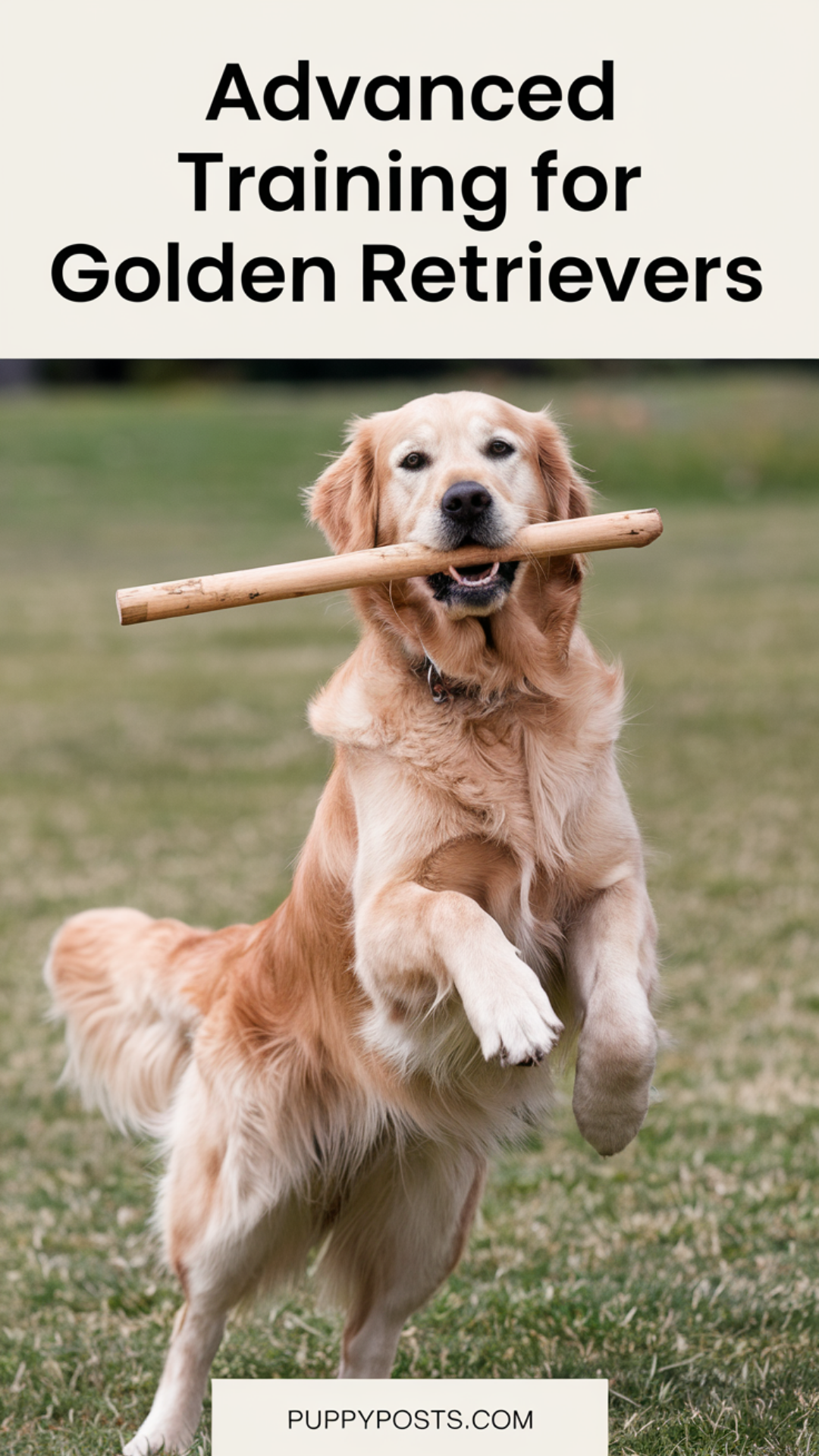Advanced Training For Golden Retrievers
As a veterinarian with over a decade of experience—and someone who runs a sanctuary for stray dogs and cats—I can tell you one thing for sure: Golden Retrievers are some of the most intelligent, eager-to-please dogs out there. But just because they’re friendly and naturally obedient doesn’t mean they don’t need training.
A bored, untrained Golden Retriever will find something to do on their own, and you probably won’t like it. Chewed-up furniture, jumping on guests, running off the second they see a squirrel—it all happens when you don’t put in the work.
If your Golden has the basics down (sit, stay, come), it’s time to step up their training. This breed thrives when given a job, and advanced training keeps their mind sharp while reinforcing discipline. Here’s how to do it right.

1. Off-Leash Reliability: Training Without a Safety Net
Golden Retrievers love to run, and if you don’t train them properly, they’ll take off the second they get the chance. Advanced obedience means they listen even when they’re free.
How to Train It:
- Start with a long leash – A 30-foot training lead lets you work on recall and commands with some control.
- Train in high-distraction areas – If your dog only listens in the backyard, they’re not trained. Practice at parks, trails, and other busy areas.
- E-collar reinforcement (if needed) – When used correctly (not as punishment, but as a tool), an e-collar can reinforce off-leash commands.
If your Golden doesn’t come when called 100% of the time, they’re not ready to be off-leash. Period.
2. The “Place” Command: Teaching Boundaries
Golden Retrievers are social dogs, which is great—until they’re in your face every second of the day. “Place” teaches them to go to a designated spot and stay there until released.
How to Train It:
- Pick a bed or mat and guide your dog onto it.
- Say “Place” and reward them when they stay there.
- Increase the duration before releasing them.
- Add distractions—guests arriving, dinner being served, kids running around.
A Golden that knows “Place” won’t be crowding the door when visitors come over or begging at the dinner table.
3. Advanced Heel: Walking Perfectly at Your Side
Golden Retrievers are strong dogs, and if they pull on walks, it gets old fast. A proper “heel” command means they stay at your side, no matter what’s going on around them.
How to Train It:
- Use structured walks – No sniffing, no pulling—just walking next to you. Sniff time comes later.
- Reinforce with changes in speed – If you slow down, they slow down. If you stop, they sit.
- Work around distractions – Other dogs, squirrels, bikers—your dog should stay in position no matter what.
If your Golden pulls on the leash, they’re walking you—not the other way around. Fix it.
4. Scent Work: Engaging Their Natural Abilities
Golden Retrievers have an excellent sense of smell, and scent training gives them a job that taps into their natural instincts. It also improves focus and impulse control.
How to Train It:
- Start by hiding a treat in one of three boxes and letting them find it.
- Once they get the idea, use different scents (like a specific essential oil).
- Increase difficulty—hide the scent around the house or yard.
Some Goldens even excel in professional scent detection, like search and rescue or medical alert work.
5. Retrieve by Name: Teaching Them to Fetch Specific Items
Goldens love to retrieve, so why not make it useful? With training, they can learn to fetch specific objects—your keys, the TV remote, or their leash.
How to Train It:
- Start with their favorite toy and give it a name (“Ball,” “Rope,” etc.).
- Say the toy’s name while encouraging them to grab it.
- Reward them when they pick up the correct item.
- Add more objects and repeat the process.
Before you know it, your Golden will be your personal assistant.
6. Advanced Impulse Control: Teaching Patience
Goldens get excited. If they don’t learn self-control, they’ll jump on people, rush through doors, or snatch food off the counter.
How to Train It:
- Doorway patience – Make them sit and wait until you give the cue to go outside.
- Food control – Set their bowl down but don’t let them eat until you say “OK.”
- No jumping – Ignore them if they jump, reward calm behavior instead.
An impulsive dog isn’t a well-trained dog. Teach patience now, and you won’t have problems later.
7. Swimming and Water Retrieval: Channeling Their Natural Abilities
Golden Retrievers were bred to retrieve from water, and swimming is a great way to burn energy while reinforcing training.
How to Train It:
- If they’re new to water, introduce it slowly—never force them in.
- Start with short retrieves in shallow water before moving deeper.
- Reinforce “come” and “drop it” while they’re in the water.
A well-trained Golden in the water is a sight to see—focused, happy, and fully engaged.
Final Thoughts
Golden Retrievers are easy to train, but that doesn’t mean you can slack off. If you don’t give them a job, they’ll find one on their own—usually one you won’t like.
Advanced training isn’t about showing off—it’s about creating a dog that listens no matter what. A dog that doesn’t bolt, doesn’t jump, and doesn’t ignore you when something more interesting comes along.
Put in the work now, and you’ll have a dog that’s not just well-behaved, but a true partner.
No shortcuts. No excuses. Get training.






